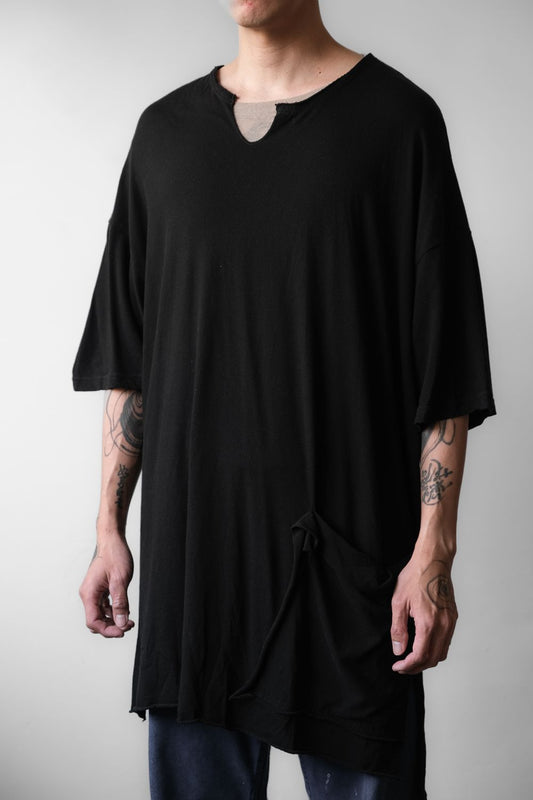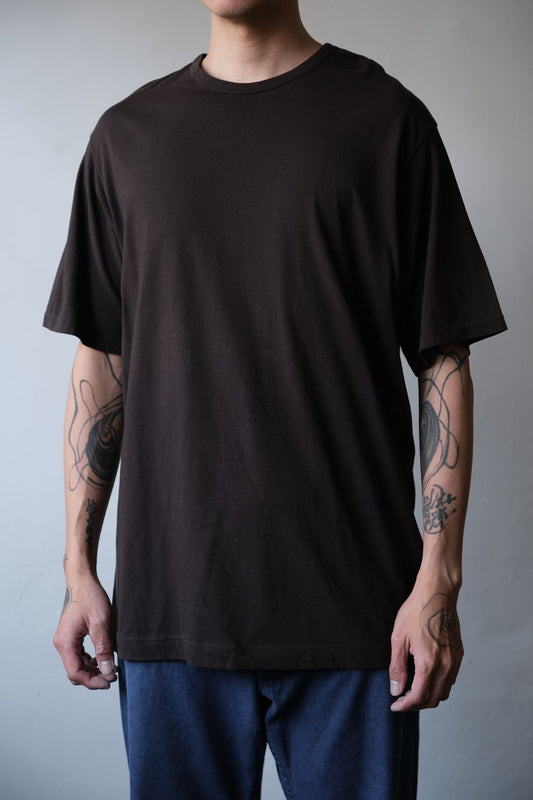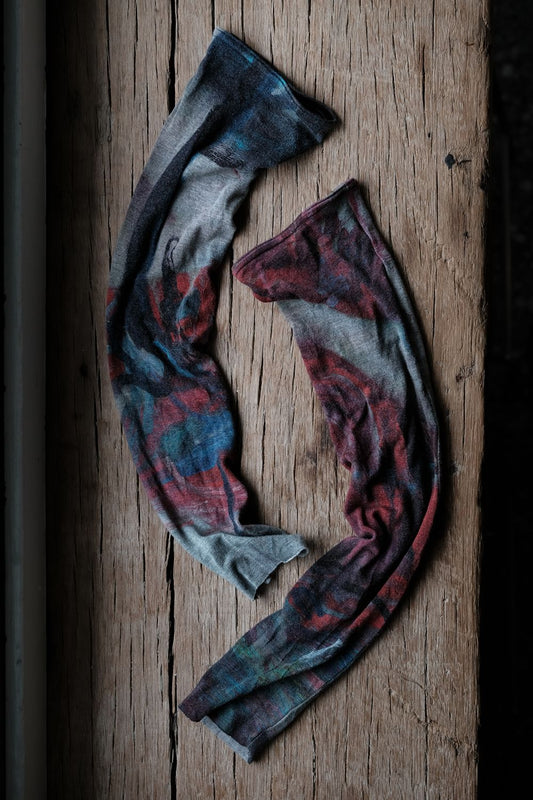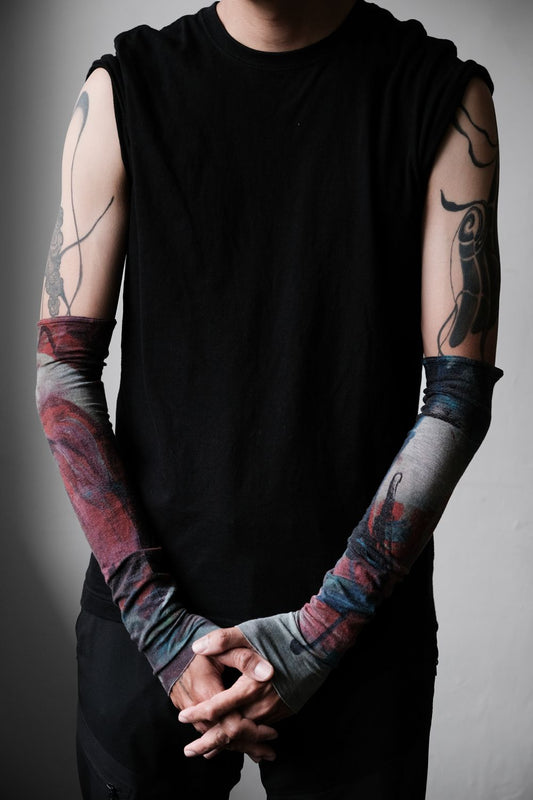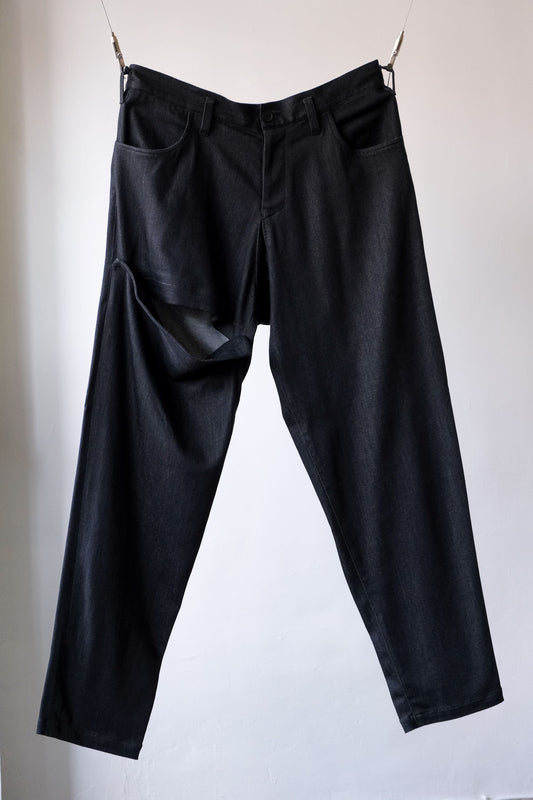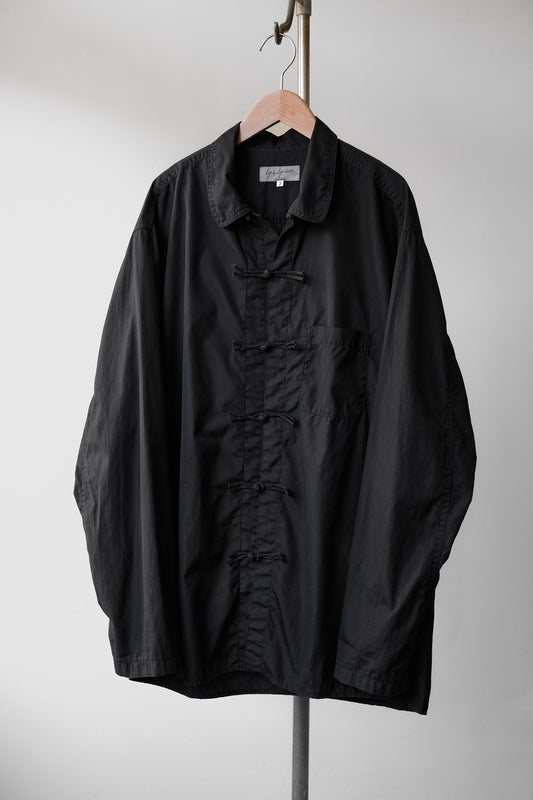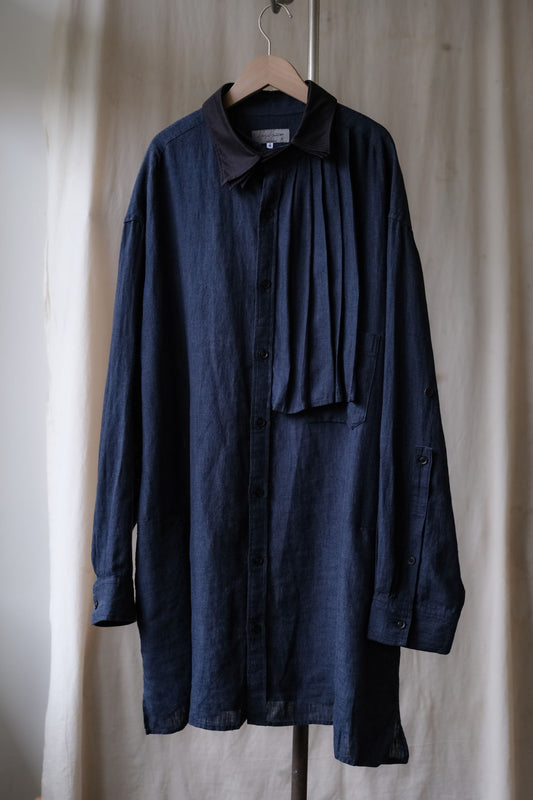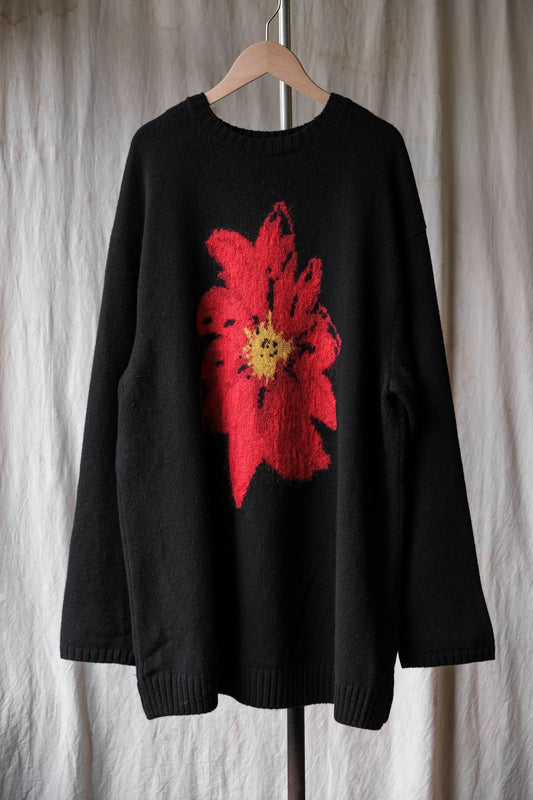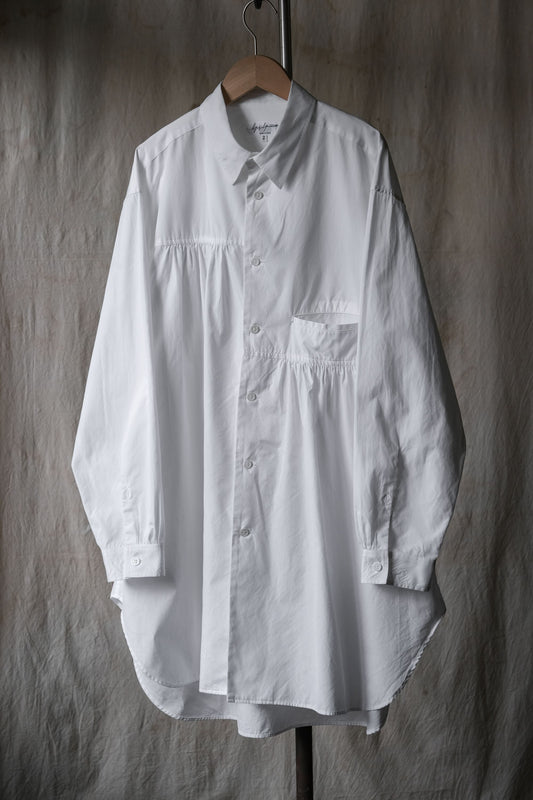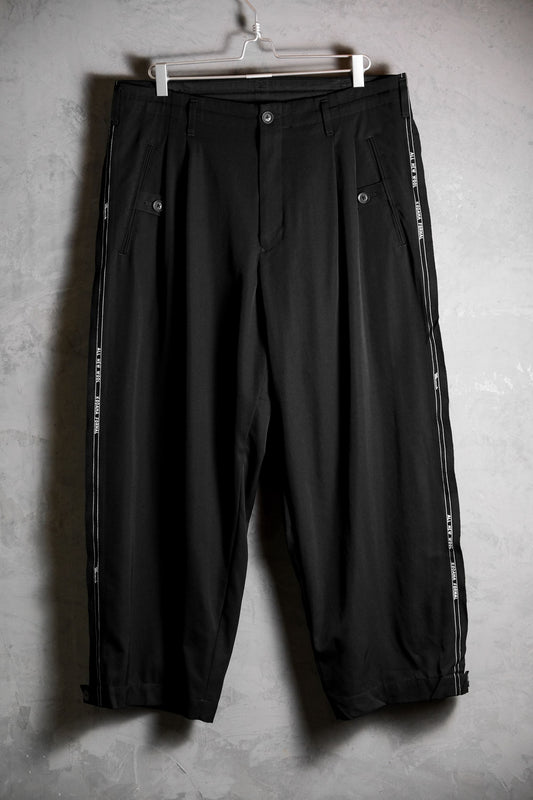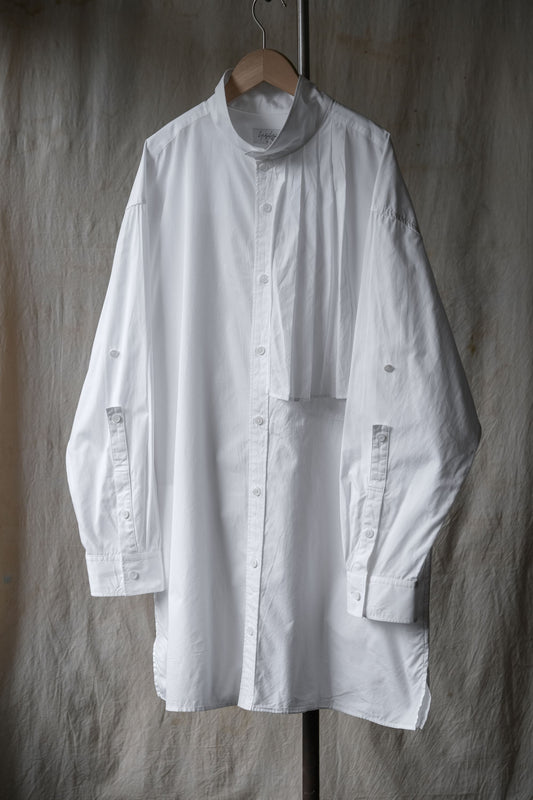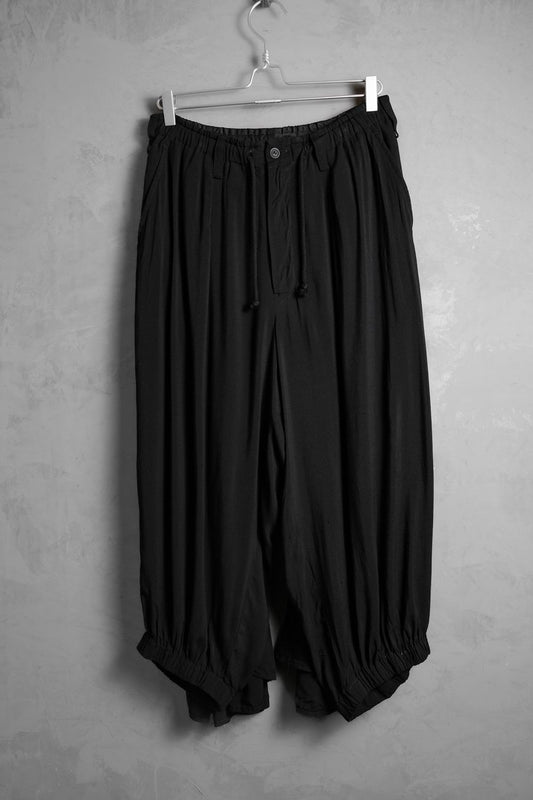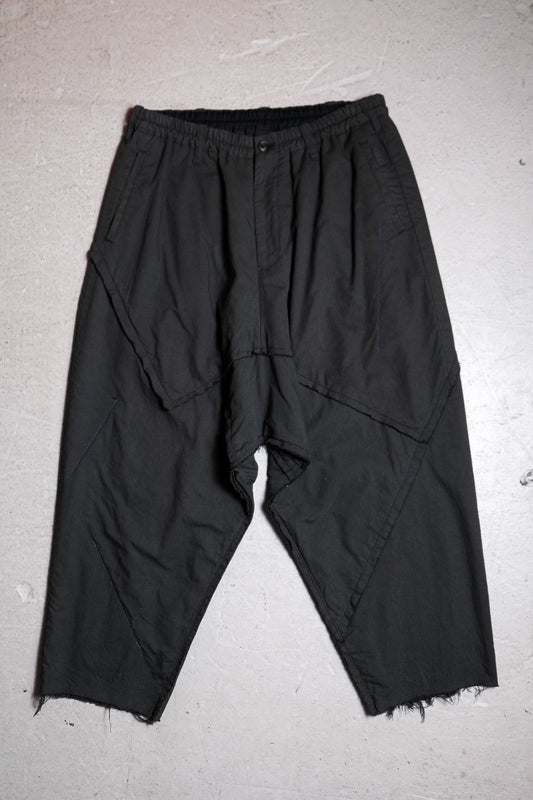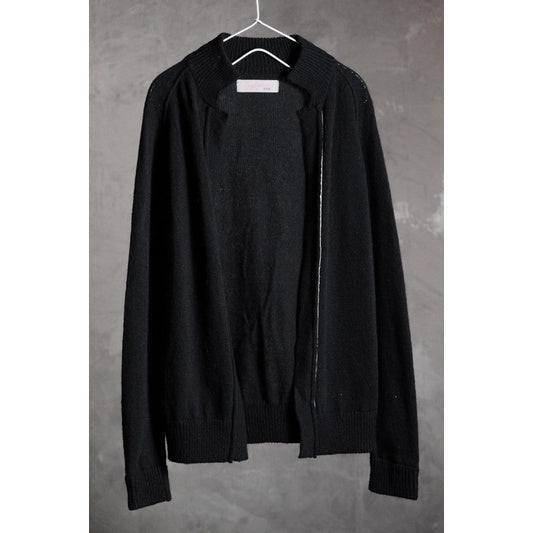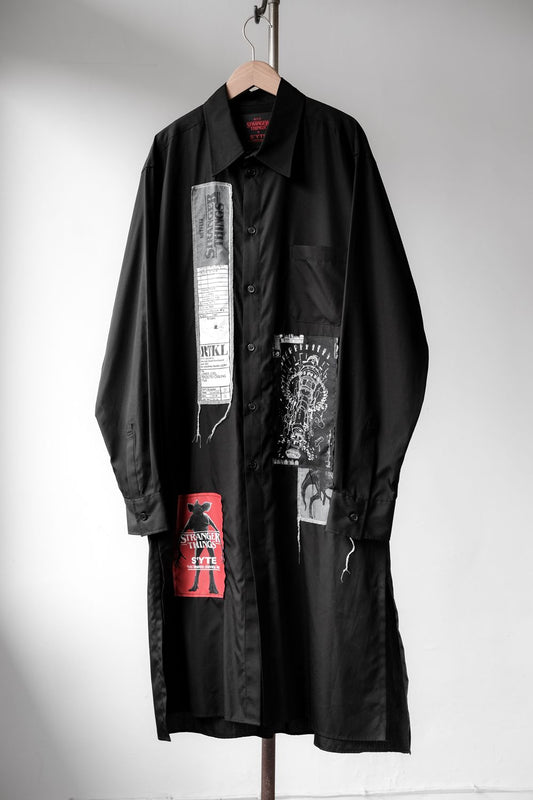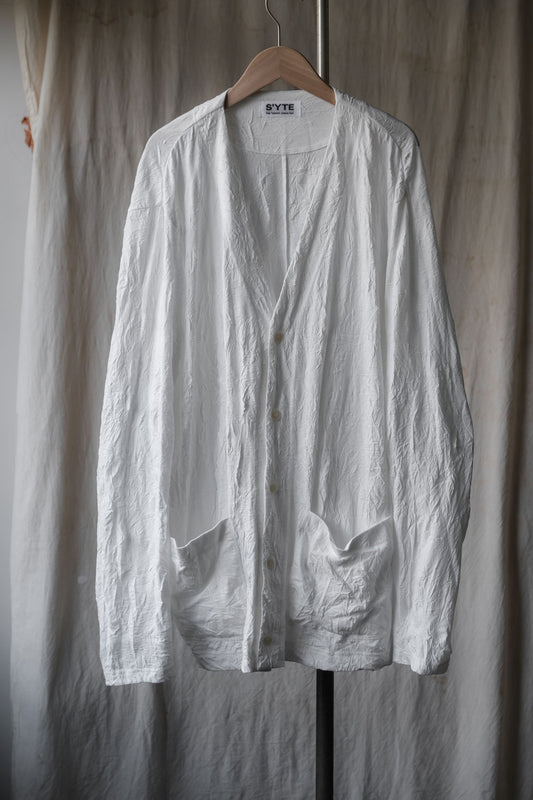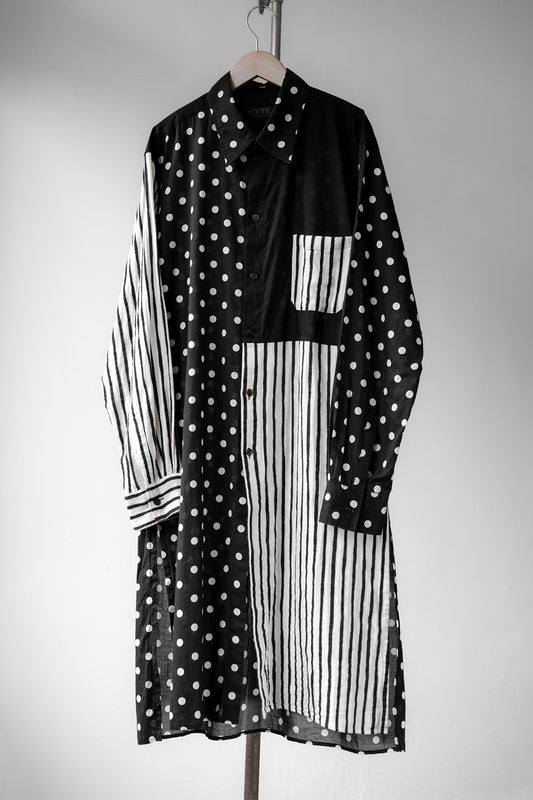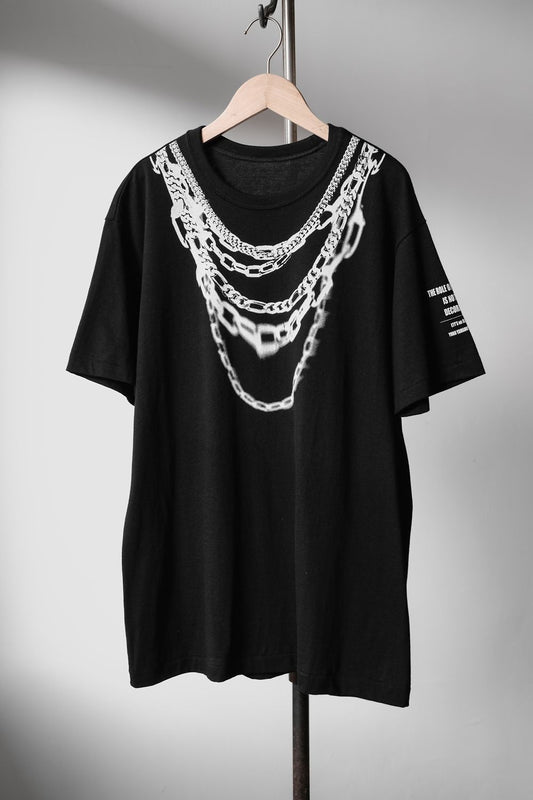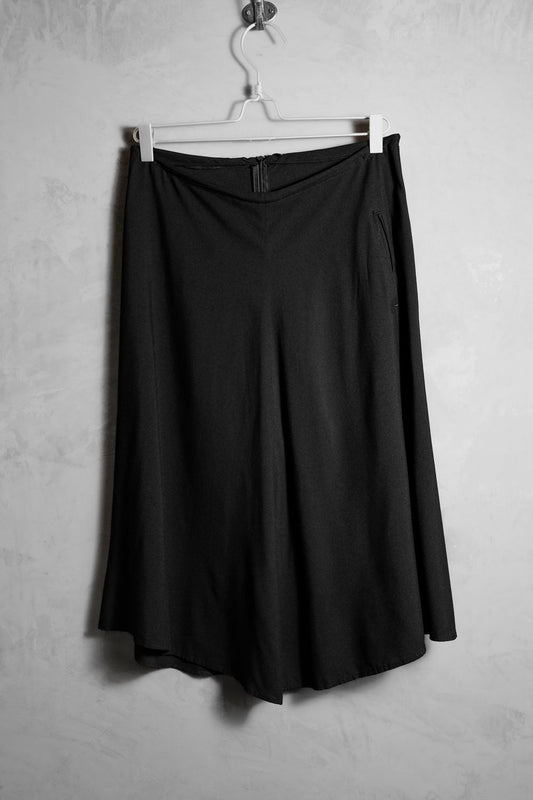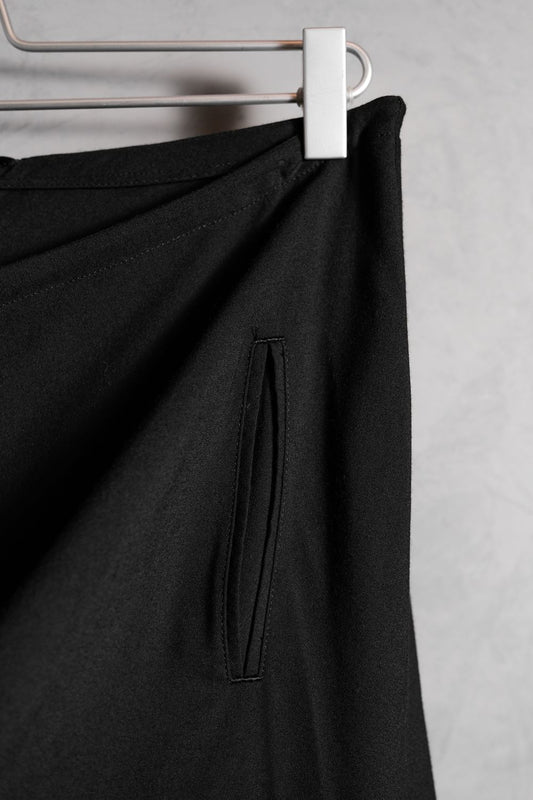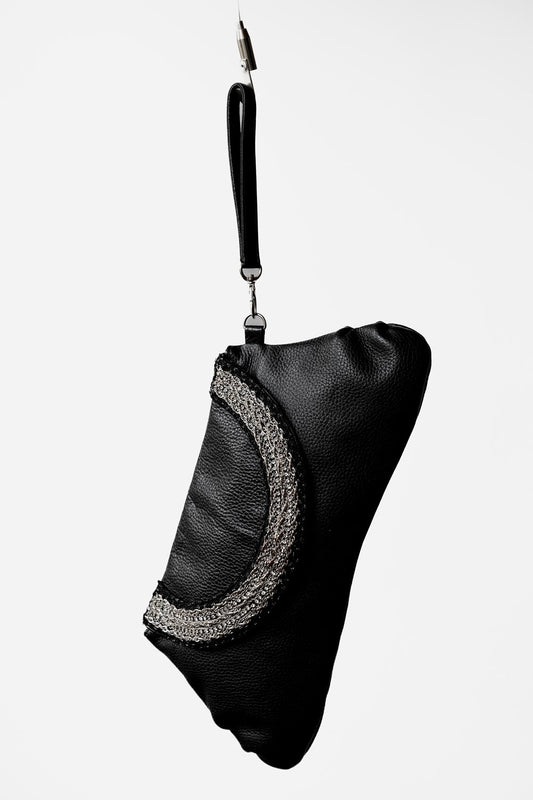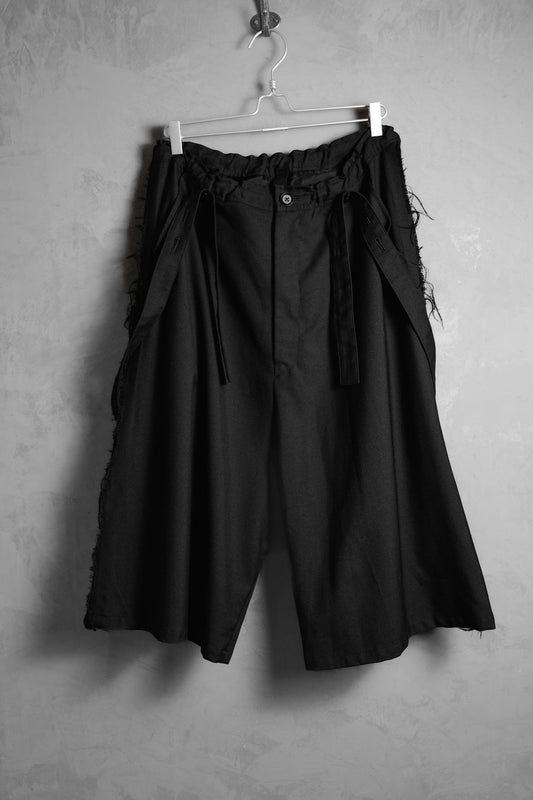Yohji Yamamoto's Design Origins: The Birth of Rebellion
Yohji Yamamoto Column Part 1
Yohji Yamamoto's Design Starting Point: The Birth of Rebellion
Yohji Yamamoto's Design Origins: The Birth of Rebellion
Growth and Turning Fashion
Brand's founding and Tokyo debut
Crossover of art and accumulation of design reputation
Expansion and crisis
Resurgence and deepening of design
After reading this selected chronology, you should be able to understand a little bit about Yohji Yamamoto's brief fashion design career. Some important time nodes will be taken out as independent articles to introduce in the following chapters. Here is a little story. Why Y's is the first brand designed by Yohji but not the name of the first show in Paris? The main reason is that when Yohji Yamamoto wanted to expand the brand to Europe, due to issues with international trademark registration, the name was too similar to YSL, and YSL raised objections and even went to court. Although the trial was fruitless, Yohji Yamamoto finally chose to use his own name as the first step into the international stage, and hence the iconic LOGO.
 Yohji Yamamoto signed via Notebook on Cities and Clothes (1989)
Yohji Yamamoto signed via Notebook on Cities and Clothes (1989)
Paris Fashion Week debuts for both menswear and womenswear
1981 Women's Collection: Yamamoto debuted his "Yohji Yamamoto" label on the Cour Carrée du Louvre in Paris in 1981, earning him the nickname "Hiroshima chic" by the French media. His style, dominated by black, layered, cutout, asymmetrical cuts, and oversized silhouettes, contrasted sharply with the slinky, opulent European fashion of the time. In his early shows, he featured unfinished edges, creased, and asymmetrical cuts. His meticulous attention to detail conveyed a handmade quality. Those who follow Yohji Yamamoto know the impact this show had at the time. Much like the galvanizing impact of Demna's Balenciaga of the same era, Yamamoto faced considerable criticism at the time, but he also captivated those eager for new silhouettes.
 Yohji Yamamoto 1981
Yohji Yamamoto 1981 
1984 Menswear Collection: Interestingly, as early as 1984, Yohji Yamamoto had already quietly established several iconic design styles and material palettes. The show, organized in three sections, showcased the evolution of his style. The opening featured a loose-fitting suit, denim trousers, and a large trench coat accented with white lines, accessorized with a newsboy cap, creating a relaxed, streetwear silhouette. The mid-show transitioned to a flowing black ankle-length trench coat and cap, showcasing his signature visuals. The finale featured velvet and suspenders, paired with a khaki and white color scheme, accessorized with a fringed scarf, and pushing the broad-shouldered silhouette to its extremes. These design idioms continue to evolve and permeate Yamamoto's work today, seemingly foreshadowing the menswear styles of the decades to come.
If one continues to observe the men's and women's shows over the following seasons, it's easy to discern the bold experimental spirit of Yohji Yamamoto. In the men's collection, in particular, black wasn't the dominant color. Bright yellow, dark brown, and purple accents, along with gray suiting, created a vibrant palette that even for a moment made one forget the dominant role black has played in the brand's historical vocabulary. As early as the Spring/Summer of 1987, he introduced a significant amount of floral motifs, laying the foundation for his future designs. And if one were to identify the defining style of "Yamamoto's Black Poetry," the Fall/Winter of 1986 would be the first. This season, with collar construction and a variety of black coats at its core, established the foundational language and aesthetic that would endure for nearly four decades.
 Photo 1986 Autumn /Winter /2019SS Replica 1987SS/1987SS
Photo 1986 Autumn /Winter /2019SS Replica 1987SS/1987SS
Yohji Yamamoto once said that in the first few years of his Paris fashion shows, 70% of people disliked his work, while only 30% liked it. This ratio might still hold true today—even now, men wearing skirts still face skepticism. As for his design cues, I believe they always revolve around the essence of the human being. Much like his reflections on the films of Yasujirō Ozu, Yamamoto pursues the appeal and feeling of clothing. A subsequent chapter will fully explore the evolution of his designs from his early years to the present day.
Why black? What is the core of Yohji Yamamoto's design?
Yohji Yamamoto began his career in Tokyo in 1977, and his debut show in Paris in 1981 stunned the industry with a sea of black garments, elegant yet deconstructed. All-black, loose, asymmetrical silhouettes, irregular hems, and voluminous jackets emphasized the dynamic relationship between fabric and the body, becoming defining features of his early designs, highlighting the clash and innovation of Eastern and Western aesthetics. I'd also like to offer a personal observation: Yamamoto didn't initially intend to conquer the European market with black; it was a familiar design concept. However, conflicts arose between different cultural spheres and visual languages. Later, driven by business model considerations and the clear establishment and recognition of his black-themed style, the public often focused on the "colorful black," gradually overlooking the complete color universe already within Yamamoto's system. I personally particularly appreciate his sensitivity to color matching. The coffee and purple colors he began using in 1985 have actually been a part of his creative process for a long time. However, we rarely discuss them independently. Even red is often seen as a supporting role in the black series, but in fact it is one of the indispensable rhythms that constitute the visual rhythm of the show. These switches and arrangements are worth repeated appreciation and reflection. Of course, Yohji Yamamoto's black still has an unparalleled sense of design, and I will introduce these subtle changes in the future.

Looking at Yohji Yamamoto's work from the 1980s to 2025, one discovers a deep consistency in his design language. This consistency doesn't refer to a repetitive use of techniques, but rather to Yamamoto's adherence to core values and aesthetic philosophy. Black is undoubtedly his signature color, but what truly runs through his work is his intuitive grasp of the relationship between body and fabric, his poetic reflections on time and memory, and his obsession with those "unnoticed parts"—particularly his insistence on back views. It's his commitment to imperfection that captivates me even more. On this journey from Tokyo to Paris, and back again from Paris to the world, Yamamoto consistently constructs a boundary between clothes and the solitary.

If we were to summarize the core of his designs, it could be summed up in three key points: constantly pushing the limits of tailoring, exploring contextually appropriate materials, and maintaining an open and experimental attitude towards the unknown and unacceptable. These are all invaluable qualities of Yohji Yamamoto. However, this constant challenge can sometimes create difficulties when viewing fashion shows. For example, when watching fashion shows, we are often forced to interpret fashion through a "cache" perspective—looking for new silhouettes, new proportions, or even a completely new design language, while neglecting the details of the design. However, revisiting these works with a calmer mindset months later often reveals the hidden power and layers of detail within them. This is why I revisit Yohji Yamamoto's shows: profound design may not be apparent at first glance, but it always captivates me again through continuous viewing and understanding. After all, each season is the result of six months of painstaking thought and implementation by Yamamoto and his team, yet viewers are expected to understand it in just thirty minutes. This is inherently an asymmetric viewing method.
Therefore, I'd like to offer a few words about the 2025AW menswear collection. Mainstream commentary almost unanimously dismissed it as a "Michelin tragedy"—the down designs, like inflated Michelin tires, were confusing and devoid of their inherent elegance and flow. However, perhaps motivated by the need to write this column, I've spent nearly two weeks revisiting shows from different periods, and the more I watch, the more I feel that this season remains very much "Yoshi Yamamoto." He once disapproved of Japanese designers' rash use of kimono concepts to enter the European market, but he also defied his own principles, challenging the kimono to elevate its design vocabulary. In extremely cold regions, Yamamoto's coats alone aren't enough to keep warm, a fact consistently reflected in customer feedback within the company. Consequently, thick down and spacesuit designs were already seen in the 16AW and 21AW menswear collections. In the 25AW collection, he radically challenged the down jacket style, a style he himself had previously found unacceptable. While we may still find it difficult to embrace such work, I still admire the Yohji Yamamoto who constantly challenges himself.
 Photos 2016AW / 2021AW / 2025AW
Photos 2016AW / 2021AW / 2025AW
Basic introduction of brand branch line

|
Brand Name |
Year of establishment |
Brand characteristics |
Remark |
|
Y’s |
1972 |
Yamamoto's first women's clothing brand emphasizes the independent spirit of "women can also wear men's clothing" and practical functional style. |
The earliest women's clothing line |
|
Y's for Men |
1979 |
Yamamoto's first menswear collection features basic styles such as practical black suits, shirts and trousers. The style is simpler than Pour Homme, but it is very cost-effective. |
Discontinued in 2010, revived in 2023, more suitable for daily use |
|
Yohji Yamamoto (Women's clothing) |
1981 |
Yamamoto's main women's clothing line is known for its philosophy of opposing traditional Western tailoring. Its designs are subversive and rebellious, with extensive use of black. It has entered the European market through tailoring and draping silhouettes. |
High-end women's clothing |
|
Yohji Yamamoto Pour Homme (Men) |
1984 |
The main menswear line, debuting in Paris in 1984, showcases masculine silhouettes that Yamamoto envisioned as being compatible with womenswear. Characterized by loose fits and a practical, wearable aesthetic, the collection offers avant-garde design. |
Until modern times, it has become more diverse and has developed many designs that go beyond the classics. |
|
AAR by Yohji Yamamoto |
1990s |
D'URBAN is a joint brand with Yohji Yamamoto. It can be purchased at a low price, but the items are ordinary. |
Mainly a sub-line of Y's for Men, it has been discontinued. |
|
Yohji Yamamoto Costume D'Homme |
1990s |
Pour Homme is a high-end suit branch within the main menswear line, providing white-collar work uniforms, emphasizing tailoring and elegant silhouettes with excellent texture. |
PS. This series is my personal dream outfit for office workers. |
|
Limi Feu |
2000 |
This women's clothing brand is designed by Limi Yamamoto, daughter of Yamamoto. She first worked at Y's and her short skirts and dresses were very popular. The Limi Feu brand is more inclined towards the design direction of punk and cool women, and many accessories are unique and ingenious. |
There are many good ideas in the design, but it is still suppressed by Yohji Yamamoto's fame. After 2025AW, he has been named as Yohji Yamamoto's successor. |
|
Y-3 (Adidas x Yamamoto) |
2002 |
Yamamoto is a high-end sports fashion series created in collaboration with Adidas. It was first launched in 2002. It combines Yamamoto's avant-garde aesthetics with Adidas' sporty elements, creating a crossover style between sports and high fashion. |
The sports crossover series is the most well-known, but it has been dormant for a while and seems to be recovering after 2023. |
|
Yohji Yamamoto + NOIR |
2005 |
Positioned as a sub-line version of the women's main line, it is based on black and emphasizes exquisite tailoring, flowing drape texture and delicate layering, combining classic elegance with contemporary everyday wear. |
More practical than the main line |
|
Y's Red Label |
2006-2008 |
Y's high-end women's clothing line, designed by Michiko Suzuki, emphasizes tailoring and materials, with a more advanced and refined style, narrow and slim fit and special collar design. |
Discontinued, only available in the Vintage and Collector's Market |
|
Yohji Yamamoto Produce |
2011 |
It offers classic design styles at relatively affordable prices, continuing the design language of Yohji Yamamoto, and is suitable for consumers who are new to Yohji Yamamoto's style. |
Balloon pants, crow pants, HAKAMA, etc. |
|
S'YTE |
2011 |
Yamamoto's official online limited edition brand, launched in the fall and winter of 2019. Combining military and punk elements, its main features are exaggerated silhouettes, three-dimensional tailoring, and functional details such as tactical belts. Initially, the entire series was made in Japan, but now it is also produced in other countries. |
Exclusive to the Internet, the most affordable price, many elements are taken from the original line |
|
REGULATION Yohji Yamamoto |
2013 |
This branch of the men's clothing line is based on the clothing that Yohji Yamamoto himself often wears. In short, it is YOHJI's personal wardrobe. |
Reprinted every season |
|
Ground Y |
2014 |
It focuses on the concept of "ageless and genderless", uses black as the main color, combines rebellious asymmetrical tailoring with cross-border print collaborations, extends Yohji's classic DNA, and is positioned one level higher than S'YTE. |
Often collaborates with anime, but the price is as high as the main line |
|
Discord Yohji Yamamoto (“discord”) |
2014 |
A high-end bag/accessory collection that extends Yamamoto's unfinished and asymmetrical aesthetic, emphasizing leather texture and Japanese craftsmanship. First launched in New York in 2014. |
Mainly bags and accessories |
|
GOTHIC Yohji Yamamoto (“Gothic”) |
2014 |
The main products are silver jewelry, such as wolves, snakes, large swords, skulls, etc., which are highly decorative and have top prices. |
|
|
YOHJI YAMAMOTO REPLICA |
2015 |
This menswear collection focuses on replicas, showcasing classic styles. While replicas may be difficult to reproduce due to imperfections in craftsmanship or fabric, they can also be more wearable thanks to new cuts and designs. |
Including actress embroidery, flowers and boys, etc. |
|
Yohji Yamamoto by RIEFE |
2018 |
The jewelry and accessories series is managed by Rie Harui. The design is based on jewelry and asymmetrical destruction, focusing on accessories such as rings, necklaces, glasses and bags. The price is high-end. |
Flashy design, but high price |
|
Y's BANG ON! |
2018 |
"BANG ON" means "bangō" in Japanese. Each product has a hand-painted model number drawn by Yamamoto himself, and is redesigned based on the main line classic model. |
|
|
BLACK Scandal Yohji Yamamoto |
2018 |
The men's main line branch focuses on pattern design and printing, and designs items with strong messages and experimental concepts. |
The most popular one is the Uchida Sparrow series |
|
WILDSIDE Yohji Yamamoto |
2022 |
Yohji Yamamoto launched a concept brand in 2022, which combines military uniforms, workwear and sports elements, emphasizes the entry-level casual functionality for both men and women, and cross-border cooperation with brands from many different fields. |
Creative cross-border platform |
|
power of the WHITE shirt by Yohji Yamamoto |
2022 |
Focusing on the design of white shirts, it expresses various possibilities through exclusive versions, cuts and textures, emphasizing the "unique expression and strength" presented through each shirt. |
Explore the possibilities of a white shirt |
These designers who once worked for Yohji Yamamoto and later set up their own studios are listed here purely to allow interested readers to see more creative context and traces extending from Yohji Yamamoto's aesthetics. Designers who were inspired by Yohji Yamamoto's designs, such as Kiko Kostadinov, will also be listed later.
|
Designer Name |
Previous departments/roles |
Create a brand |
Notes/Follow-up Activities |
|
Haiseki Yu |
Employees at Yohji Yamamoto |
ANEI (2018) |
The style is minimalist and delicate, focusing on high-quality materials and the calm aesthetics of oriental Zen. |
|
Suzuji Harimoto |
Employees at Yohji Yamamoto |
APOCRYPHA. |
He founded REIJI HARIMOTO, which later became APOCRYPHA. |
|
Masaaki Honma |
Yohji Yamamoto Employees 1989–1995 |
mastermind JAPAN |
A luxurious dark style that combines street elements with high-end tailoring. |
|
Honma Yu |
Y's / Yohji Yamamoto Femme |
HOMMA |
Won the Fashion Garden Award, with a simple deconstruction style, deconstruction × craftsmanship clothing, and active in Tokyo Fashion Week |
|
Yoda Seihiko |
Yohji Yamamoto Knitwear Designer |
Nahyet (2017) |
With high-quality knitting technology as the core |
|
Marukawa Masayuki |
Yohji Yamamoto Men’s/Y’s |
M/M |
Joined the company in 1984, founded M/M, and participated in Tokyo Fashion Week |
|
Seta Ichiro |
Employees at Y's / Yohji Yamamoto |
seta ichiro |
He worked for Gaultier in France, founded the brand in 1998, and appeared at Milan Fashion Week in the fall of 2002. |
|
Michiko Suzuki |
Y's Red Label designer (late 2000s) |
Nocturne #22 In C Sharp Minor, Op. Posth. |
Minimalist abstraction, fusion of deconstruction and poetry, showing the quiet and avant-garde female power. |
|
Atsuro Tayama |
Yohji Yamamoto Europe Team |
AT, ATSURO TAYAMA |
After leaving in 1982, he founded his own brand, Parisian elegance and deconstructed silhouettes, which appeared on the Paris and Tokyo Fashion Weeks. |
|
Teppei Fujita |
Yohji Yamamoto, Men's Wear Pattern Maker |
sulvam (2014) |
Strong three-dimensional structure, experimental spirit, and international activity, but 2025 is no longer on display at Paris Fashion Week. |
|
Nishizaki Nobuo |
Yohji Yamamoto |
Ujoh (2009) |
Exquisite tailoring combined with deconstruction aesthetics will be showcased at Paris Fashion Week in 2025 |
|
エンニョ・カパサEnnio Capasa |
Yohji Yamamoto employee (early years) |
Costume National |
Italian designer, later founder of a world-renowned brand |
|
Rimi Yamamoto |
Yohji Yamamoto's daughter; founded a brand within the company |
LIMI feu (2000) |
It is not a startup after leaving the company, but an internal startup |
|
Ashlynn Park |
Yohji Yamamoto and Calvin Klein pattern maker |
Ashlyn (2021) |
A fusion of Eastern and Western tailoring aesthetics and sustainable concepts, it is classic yet has a modern sculptural feel. |
This article will also list some links and related knowledge that will be continuously updated.
1. A collection of early menswear shows from 1984 <br>Click here: Yohji Yamamoto POUR HOMME, Early Shows
2. Tips for identifying YOHJI YAMAMOTO labels + Tips for identifying counterfeit goods
Click this link: YOHJI YAMAMOT O TIP label identification
a. Current status of independent designers since leaving Yohji Yamamoto
b. Early show images and pictures
c. Yohji Yamamoto's earliest historical links
d. Designers influenced by Yohji Yamamoto





